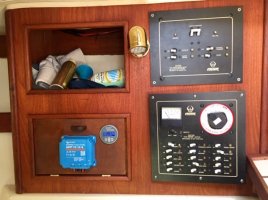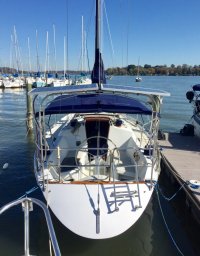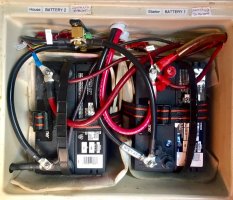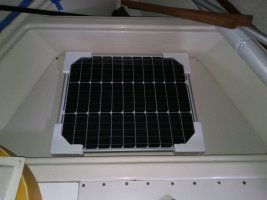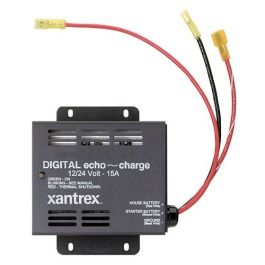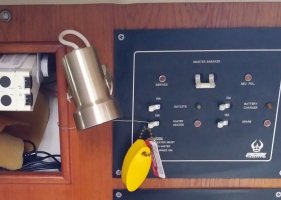This is the
controller I installed:
Buy Victron Energy SmartSolar MPPT 75V 15 amp 12/24-Volt Solar Charge Controller (Bluetooth): Energy Controllers - Amazon.com ✓ FREE DELIVERY possible on eligible purchases
www.amazon.com
My two 100W panels both feed into it.
This is the
battery monitor I got (the next size up is is only needed for significantly larger panels and I don't have room for that much solar panel real estate - plus, the next size up has heat dissipation fins underneath it, which make it stand about a 1/2" off the mounting surface - I didn't want that 'look'):
- it comes with the shunt (the temp probe is an additional, optional, item).
You have to think a little about how to wire the shunt in so that
all outgoing power gets 'measured' by the shunt, but the monitor's handbook has good instructions. I was able to do this for everything except the windlass, but that's not a slow & steady drain on the batteries, which, I think, is what you most want to monitor.
Attached is a pic of where I mounted both units beside the DC distribution panel.
The
solar panel wires came in through a waterproof gland on the outside of the port cockpit combing (which you can barely see in the stern view pic below), over the little bulkhead back there and above the zippered headlining into the top of the open cubby hole ... you can actually see a bit of them (red & black) in that cubby hole. From there, they went down into the space behind the little hinged cover I mounted the controller into.
The
battery monitor's wiring goes down, though a 1" hole cut in the little ledge in the fiberglass liner, to the side of the battery box (you can reach this area from the inspection port at front-left of the battery box).
- the
battery box pic below is a bit busy, but you can see where I mounted the shunt: the upper hole in the side of the battery box is for the windlass cables, but the hard-to-see hole below it is for the shunt<-->monitor wires (and the temp probe wires - which have the blue heat-shrink at the terminus seen near top left).
